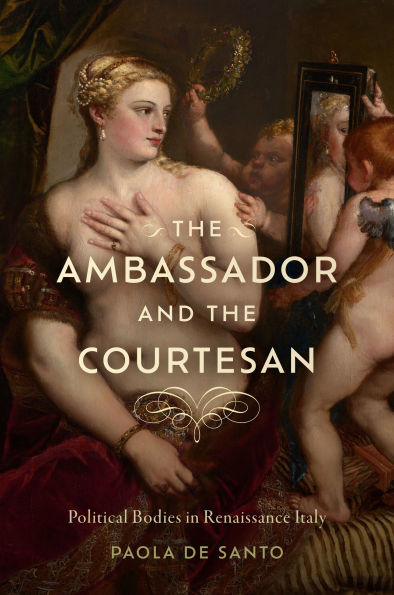The Ambassador and the Courtesan: Political Bodies in Renaissance Italy
Drawing on literature, legal texts, and archival materials, The Ambassador and the Courtesan offers a comparative analysis of these two emerging roles in the early modern period and in Renaissance Italian society. While these two figures may appear unrelated, this book demonstrates their shared relation to the body politic, including the relationship of their very bodies to that metaphorical body. One imagines the early modern ambassador as traveling from one center of power to another, gathering news and disseminating it in writing, as well as negotiating in person. The courtesan, in contrast, is normally imagined employing her body in the service of entertaining elite clients in the enclosed space of the urban salon. These characterizations reinforce their very different roles in Renaissance Italian society and culture, but by placing them in dialogue, salient points of convergence emerge detailing how they were integral to the concurrent emergence of a modern subjectivity of the individual and the formation of the modern state.
1147239754
The Ambassador and the Courtesan: Political Bodies in Renaissance Italy
Drawing on literature, legal texts, and archival materials, The Ambassador and the Courtesan offers a comparative analysis of these two emerging roles in the early modern period and in Renaissance Italian society. While these two figures may appear unrelated, this book demonstrates their shared relation to the body politic, including the relationship of their very bodies to that metaphorical body. One imagines the early modern ambassador as traveling from one center of power to another, gathering news and disseminating it in writing, as well as negotiating in person. The courtesan, in contrast, is normally imagined employing her body in the service of entertaining elite clients in the enclosed space of the urban salon. These characterizations reinforce their very different roles in Renaissance Italian society and culture, but by placing them in dialogue, salient points of convergence emerge detailing how they were integral to the concurrent emergence of a modern subjectivity of the individual and the formation of the modern state.
125.0
Pre Order
5
1

The Ambassador and the Courtesan: Political Bodies in Renaissance Italy
210
The Ambassador and the Courtesan: Political Bodies in Renaissance Italy
210
125.0
Pre Order

Product Details
| ISBN-13: | 9781644534168 |
|---|---|
| Publisher: | University of Delaware Press |
| Publication date: | 02/10/2026 |
| Series: | The Early Modern Exchange |
| Pages: | 210 |
| Product dimensions: | 6.12(w) x 9.25(h) x (d) |
| Age Range: | 18 Years |
About the Author
From the B&N Reads Blog
